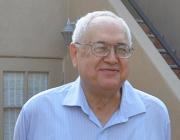Date Published:
JUL 1Abstract:
The close coupling wave packet (CCWP) and quasiclassical trajectory methods are used to study rotationally inelastic scattering of N2 from static, corrugated surfaces. The collision energy in these calculations ranges from 10 to 100 meV; 18 711 quantum states are included in the highest energy calculations to ensure convergence. The scattered molecules are analyzed with respect to the polarization of the final angular momentum vector and the amount of energy transferred into rotational motion and translational motion parallel to the surface. Comparisons of quantum and quasiclassical results show that quantum effects are important even with the relatively large mass of N2 and the high scattering energies used and can be seen even after summing over many final quantum states. A test of a factorization relation derived from the coordinate-representation sudden (CRS) approximation gives qualitative agreement with the exact quantum results.
